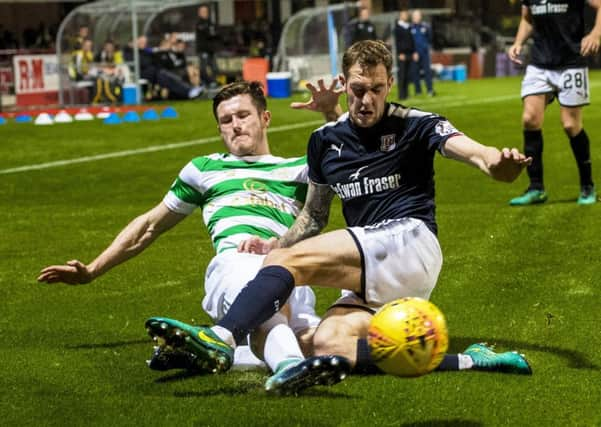Five things we learned from Dundee 0 - 4 Celtic


Even cup quarter-finals are training ground exercises for Celtic
The away side didn’t look like they ever got out of second gear and they won 4-0. They even took time off in the second half to knock the ball around with little intention of doing anything else other than killing time, and they won 4-0. Aside from the draw with St Johnstone, this was probably the flattest performance from them this domestic season - and they won 4-0!
Advertisement
Hide AdAdvertisement
Hide AdIt should be the perfect warm-up for Saturday. Rangers had to go balls to the wall for 120 minutes a day earlier; Celtic had a lovely stroll in a park off Tannadice Street. With other teams you could caution the dangers of lulling themselves into a false sense of security, where they fail to rouse themselves for the high-intensity match at the weekend. But that won’t happen, not this team. They know what it takes to win an Old Firm derby and do so comfortably. And they’re ready to prove it again.
Teams are running out of ways to get beat by Celtic
Dundee went with a similar gameplan to the one Aberdeen had in the Scottish Cup final on the defensive end. They went for a man-marking system rather than a zonal approach. Having presumably watched Celtic cut through Ross County’s 5-4-1 zone on Saturday time and again, Dundee boss Neil McCann perhaps felt it was wise to trust his individual players, and, final score aside, it did have its uses. Celtic had to be a little more patient and weren’t allowed to play with the same verve that they typically manage.
Some players, including Glen Kamara (more on him to come) even won their individual battles as some of Celtic’s key performers were kept quiet. The problem is that you have to rely on every player winning their individual battle. Because if for instance Cammy Kerr doesn’t manage to subdue Scott Sinclair then the chances of Celtic winning are still very high regardless of what else is happening. There are just too many weapons.
That being said, looking at the way the first half played out, with two lapses in concentration and two great chances passed up by the hosts, it could have been a different game if Dundee had that little bit more quality. Maybe an approach for a stronger team to try (and probably fail with) at a later date.
Scott Brown’s importance cannot be understated
There’s a reason the Celtic captain is the outfield player who’s rotated the least in the starting XI. He just gives such a great platform for the other players in which to play. Though not thought of as the most technically skilled player or passer - though his deficiencies in both areas are exaggerated by his critics - he just reads the game superbly well and understands his role down to a tee.
Against Dundee he was continually in the right place, acting as a barrier between grueling defensive pressure and the mirage of attacking optimism in the eyes of the home side. He robbed them of possession time and again, at which point he would maneuver around the pressing and find the man in space, launching another dangerous attack.
Glen Kamara could be one of the signings of the summer
Brown’s counterpart was the best player in the home ranks. Kamara was tasked with man-marking Patrick Roberts in the first-half, and while it may sound like he was on a hiding to nothing, he was someone who could say they won their individual battle. Undersized for a defensive midfielder both in terms of height and muscle mass, he shows a lot of heart and determination to battle with bigger opponents, and he isn’t afraid to put in a hard tackle.
Little was known of the midfielder when he arrived this summer but he’s made a big impression on the fans already. It’s easy to see why, in a squad with a plethora of central midfield options, he seems to be the only guaranteed starter.
Brendan Rodgers has a couple of selection headaches
Advertisement
Hide AdAdvertisement
Hide AdThere’s the formation for starters. 4-2-3-1 is probably still looked upon as his go-to approach, but the three-at-the-back variations (3-5-2 or 3-4-3) have worked very well over the last three games in domestic football. It also helps with the no centre-backs issue as playing with a three enables him to squeeze those square pegs into round holes by situating a full-back (Mikael Lustig, Kieran Tierney) or midfielder (Nir Bitton) either side of the true centre-back (probably Dedryck Boyata on Saturday).
Then there’s the individual battles. If there’s only space for James Forrest or Patrick Roberts, does Rodgers go for ability or the better fit in the system? Not to mention Forrest’s goalscoring exploits of late. Does he pick Stuart Armstrong, someone capable of driving from deep and contributing around both boxes? Or does he prefer Olivier Ntcham, the man who helps his side dominate possession? And where does Tom Rogic fit into all of this?
Meanwhile, Pedro Caixinha is wondering whether to play a 19-year-old who’s never made a Premiership appearance before. It’s good problem for Rodgers to have.
